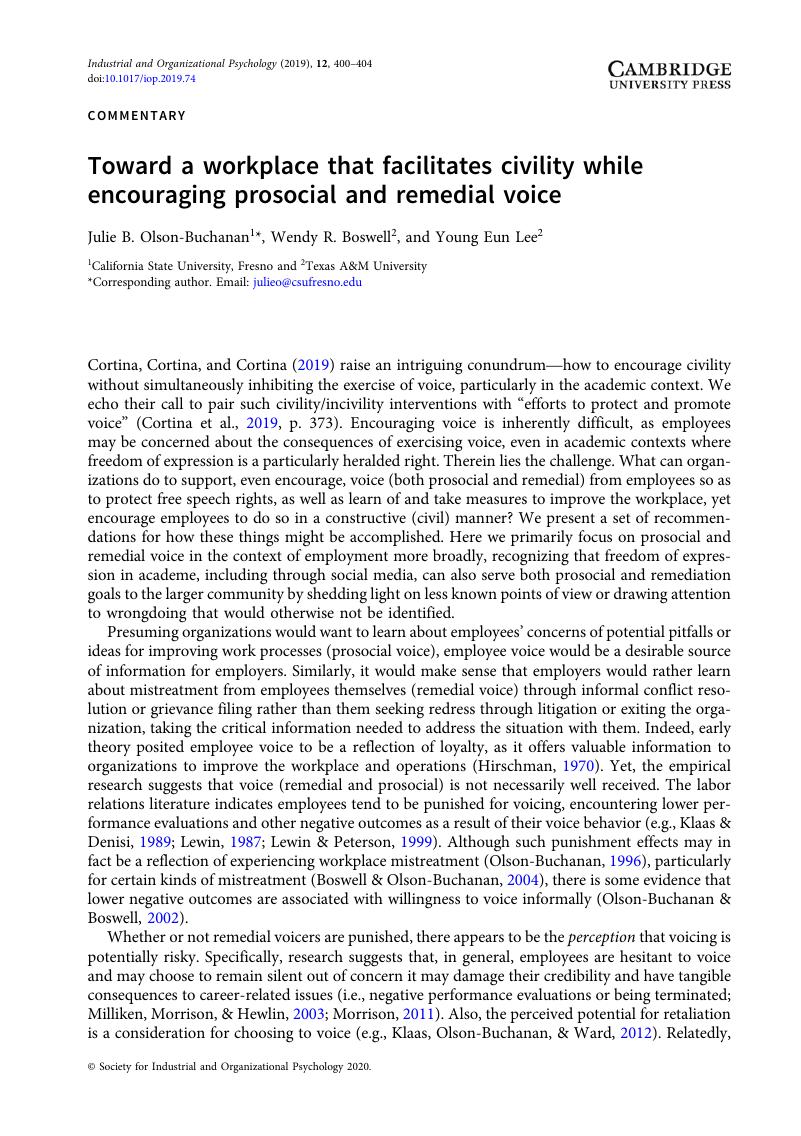Crossref Citations
This article has been cited by the following publications. This list is generated based on data provided by Crossref.
Smith, Chelsie J.
Schweitzer, Linda
Lauch, Katarina
and
Bird, Ashlyn
2022.
‘Well, actually’: investigating mansplaining in the modern workplace.
Journal of Management & Organization,
p.
1.
Zheng, Xiaotao
Wu, Bingqing
Park, Haesang
Yu, MingChuan
and
Yang, Xiaoling
2023.
Stew in silence or boil up gradually? A process model of employees’ remedial voice.
Journal of Management & Organization,
p.
1.



